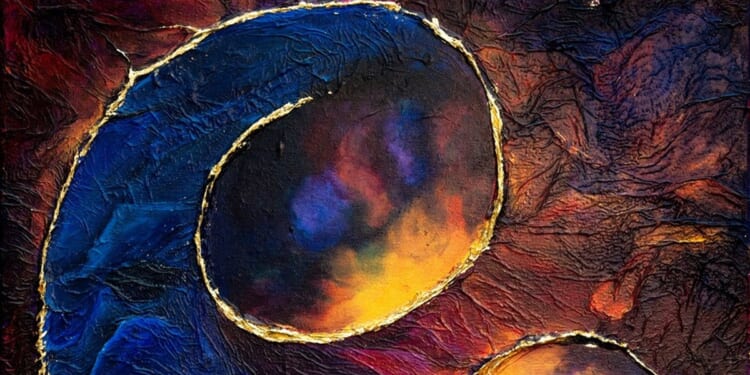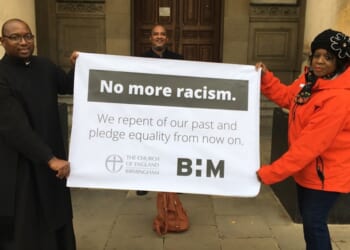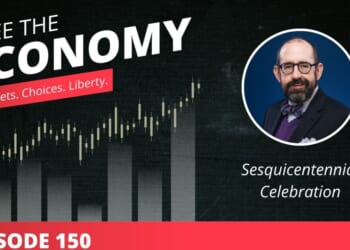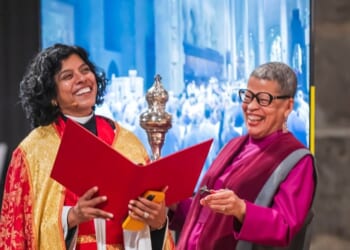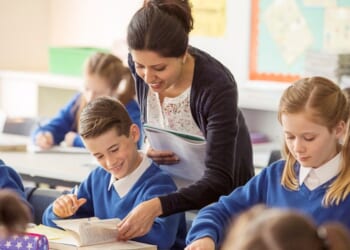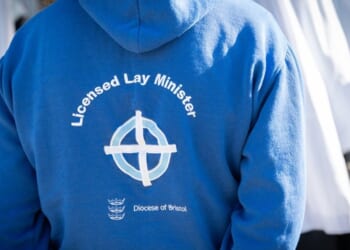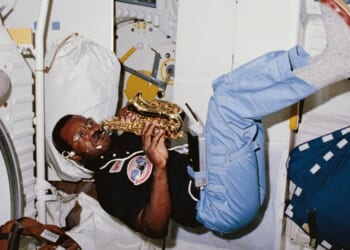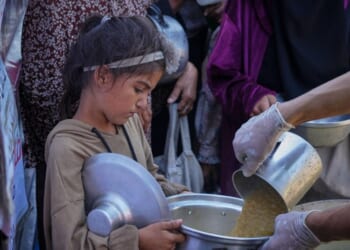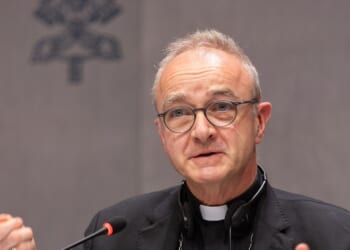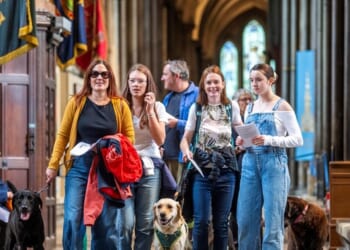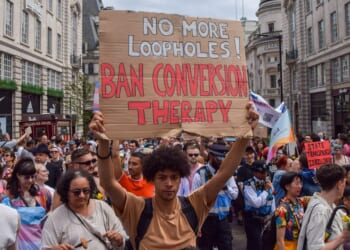AS A New Year resolution, Alexander Berry (Director of Music at Great St Mary’s, Cambridge) challenged himself to learn a really substantial piece of repertoire. Since it was just after Christmas, he chose Messiaen’s stunning, glorious Christmas sequence, La Nativité du Seigneur: an hour of beautiful — and technically difficult — organ music, in nine movements, which meditates on the incarnation.
When Alex asked me whether I’d like to make it a joint art and music project, it was the easiest “Yes” ever. I have always loved Messiaen’s music, and I had wanted for a while to branch out into abstract art. But, for both of us, it was a bit of a leap of faith, which would take us well out of our comfort zones.
We wanted it to be a home-grown project: something that would emerge from the church where we are based and its particular context, drawing in a new way on the gifts and passions that we exercise all the time in the course of our respective ministries. We discovered only later that we weren’t the only people to think of this idea: Sophie Hacker’s Winchester collaboration with Sarah Baldock, in 2008, is the best known. Bringing music, art, and theology together is such a generative and creative process, however, that there is very little risk of getting the same result twice.
WE DECIDED early on to offer the music and art as a devotional performance rather than as a standard concert and exhibition. And, for both of us, the process itself became devotional. The more we dwelt with this extraordinary work — composed by a man from his own profound faith — the more it drew us into an experience that was increasingly prayerful and spiritual: it was impossible for it not to become devotional.
This reaffirmed our desire to offer something during Advent which would give people a different experience of the Christmas story, through the arts, through beauty, and through mystery, and largely without words (though there will be some programme notes, and Messiaen provided biblical texts for each movement).
LIKE Alex, I took my first degree in music, and creating the artworks involved looking in detail at the music itself and analysing it on Messiaen’s own terms. In particular, his “modes of limited transposition” (that is, the specific combinations of notes around which his harmonies are structured) are closely matched with colour combinations, through the composer’s synaesthesia, about which he wrote in some detail. The paintings all reflect these colours, besides including a few from my own (much milder) synaesthesia.
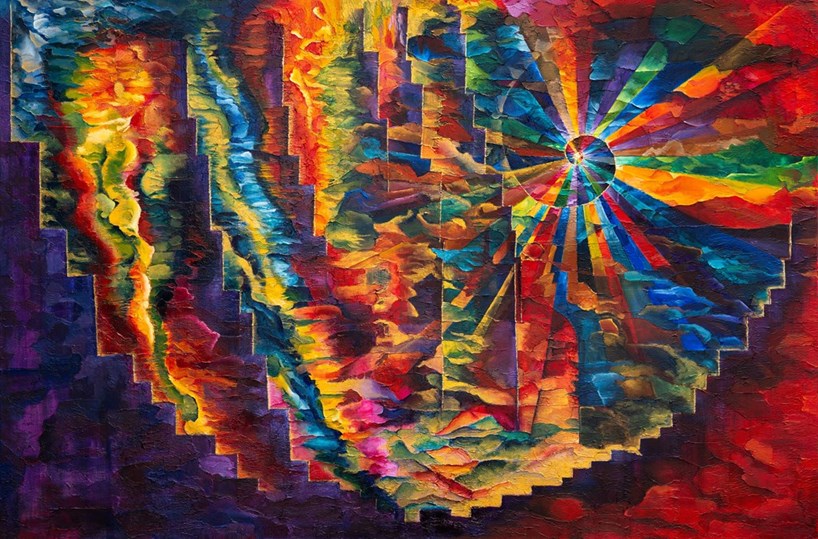 Dieu parmi nous
Dieu parmi nous
For much of the project, I was waiting for eye surgery; so I wanted to enable people with visual impairments to be able to engage with the artworks I was creating.
Although Messiaen was particularly interested in colour, all the paintings also make use of texture, and anyone visiting the exhibition who can’t see the paintings will be welcome to touch them, instead.
The textures are also part of the theological process: metallic gold-thread stitching traces the path of the magi (this took a long time, which was kind of the point — it was a long journey); ground-up charcoal from last year’s Easter fire is mixed with the gesso for the painting that focuses on Jesus’s acceptance of suffering. All the paintings have a slightly “fleshy” texture (created using kitchen roll and PVA glue) paired with gold leaf, to bring together the human and the divine, the earthly and heavenly, the domestic and the numinous.
THIS event is part of the Great St Mary’s public-theology programme, through which we seek to develop and live out the church’s vocation within the city and University of Cambridge, and in the wider Church. Our experience has been both theological and spiritual, through the media of art and music. Alex started his musical education as a chorister at Lichfield Cathedral; so music has always been formative in his faith, spirituality, and sense of belonging in the Church.
Before ordination, I worked for the Theology Through the Arts project at Cambridge University’s Faculty of Divinity, where I first encountered the idea that theology could happen without words. Messiaen certainly thought so, and his music is theologically profound and articulate. We offer this devotional performance as something that is both art and theology.
IT IS fair to say that La Nativité is not “low-threshold” music, and the artworks may not be very low-threshold, either. What we are offering is an invitation to slow down, to pay quality attention to something that may still feel mysterious — no bad thing in Advent. We hope that people will come along with an open heart and open mind, ready to be surprised. We hope also that they will find themselves drawn more deeply into the awesome mystery of the incarnation.
Alex has told me that this is the most moving piece that he has ever learned. And I have found creating the artworks to be the most spiritually demanding and fruitful thing that I have ever done. It has been a slow, substantial, and challenging process, but that’s part of the deal: we wouldn’t have it any other way — and we are already talking about what we might do next.
The Revd Ally Barrett is Associate Vicar of Great St Mary’s, the University Church, Cambridge.
The event takes place on Sunday 14 December, in Great St Mary’s. The exhibition starts at noon, and the devotional performance will be at 4 p.m. There will be refreshments afterwards, and a chance to mingle and share reflections, or to spend time in quiet reflection.

